For the 2025 school year, there is 1 public elementary school serving 174 students in Hettinger 13 School District. This district's average elementary testing ranking is 4/10, which is in the bottom 50% of public elementary schools in North Dakota.
Public Elementary School in Hettinger 13 School District have an average math proficiency score of 37% (versus the North Dakota public elementary school average of 41%), and reading proficiency score of 42% (versus the 44% statewide average).
Minority enrollment is 12% of the student body (majority American Indian and Asian), which is less than the North Dakota public elementary school average of 30% (majority American Indian and Hispanic).
Overview
This School District
This State (ND)
# Schools
2 Schools
337 Schools
# Students
290 Students
82,568 Students
# Teachers
30 Teachers
6,728 Teachers
Student : Teacher Ratio
10:1
10:1
District Rank
Hettinger 13 School District, which is ranked within the bottom 50% of all 167 school districts in North Dakota (based off of combined math and reading proficiency testing data) for the 2021-2022 school year.
The school district's graduation rate of 80% has stayed relatively flat over five school years.
Overall District Rank
#109 out of 169 school districts
(Bottom 50%)
(Bottom 50%)
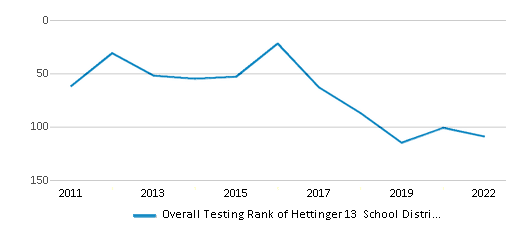
Math Test Scores (% Proficient)
35-39%
39%
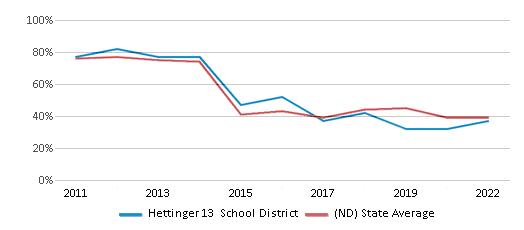
Reading/Language Arts Test Scores (% Proficient)
40-44%
44%
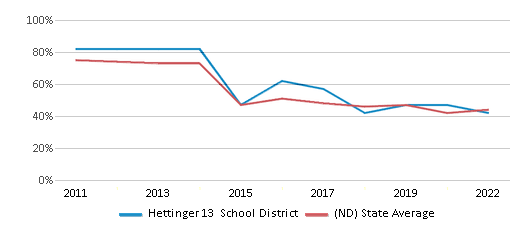
Science Test Scores (% Proficient)
30-39%
44%
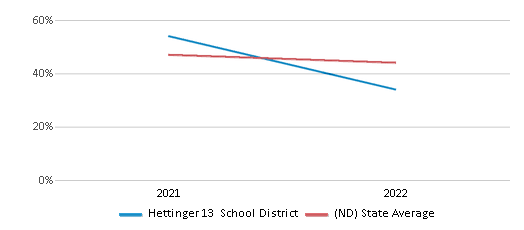
Graduation Rate
≥80%
85%
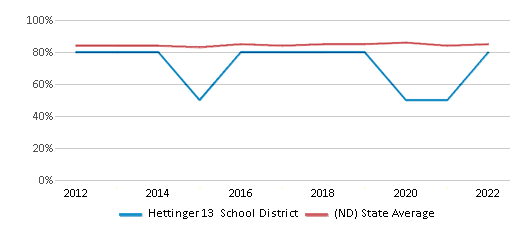
Students by Ethnicity:
Diversity Score
0.23
0.50
# American Indian Students
12 Students
9,178 Students
% American Indian Students
4%
11%
# Asian Students
7 Students
1,251 Students
% Asian Students
2%
1%
# Hispanic Students
9 Students
5,824 Students
% Hispanic Students
3%
7%
# Black Students
2 Students
4,615 Students
% Black Students
1%
6%
# White Students
255 Students
57,407 Students
% White Students
88%
70%
# Hawaiian Students
n/a
274 Students
% Hawaiian Students
n/a
n/a
# Two or more races Students
5 Students
4,019 Students
% of Two or more races Students
2%
5%
Students by Grade:
# Students in PK Grade:
19
2,144
# Students in K Grade:
16
8,683
# Students in 1st Grade:
25
9,525
# Students in 2nd Grade:
22
9,752
# Students in 3rd Grade:
17
9,340
# Students in 4th Grade:
20
9,408
# Students in 5th Grade:
31
9,314
# Students in 6th Grade:
24
9,461
# Students in 7th Grade:
16
6,981
# Students in 8th Grade:
21
7,005
# Students in 9th Grade:
18
277
# Students in 10th Grade:
22
255
# Students in 11th Grade:
21
222
# Students in 12th Grade:
18
201
# Ungraded Students:
-
-
District Revenue and Spending
The revenue/student of $18,145 is higher than the state median of $17,615. The school district revenue/student has stayed relatively flat over four school years.
The school district's spending/student of $16,779 is less than the state median of $17,617. The school district spending/student has stayed relatively flat over four school years.
Total Revenue
$5 MM
$2,154 MM
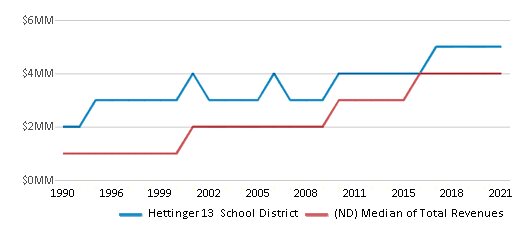
Spending
$5 MM
$2,154 MM
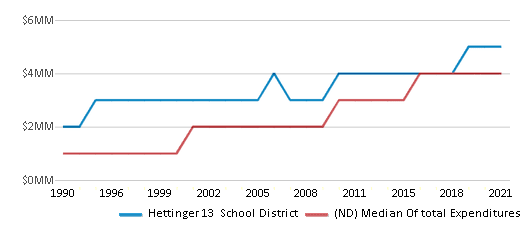
Revenue / Student
$18,145
$17,615
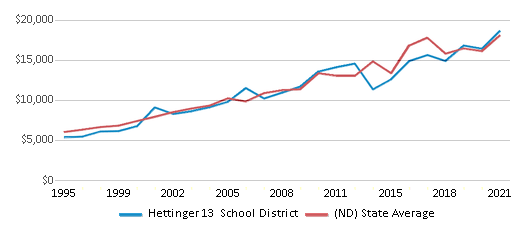
Spending / Student
$16,779
$17,617
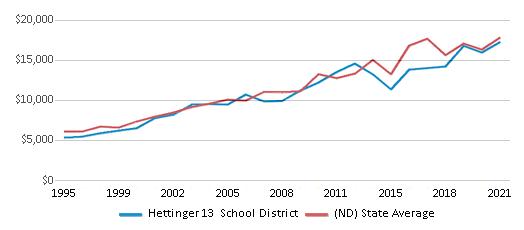
Best Hettinger 13 School District Public Elementary Schools (2025)
School
(Math and Reading Proficiency)
(Math and Reading Proficiency)
Location
Grades
Students
Rank: #11.
Hettinger Elementary School
(Math: 35-39% | Reading: 40-44%)
Rank:
Rank:
5/
Bottom 50%10
209 S 8th St
Hettinger, ND 58639
(701) 567-5315
Hettinger, ND 58639
(701) 567-5315
Grades: PK-6
| 174 students
Recent Articles

What Is A Charter School?
Explore the world of charter schools in this comprehensive guide. Learn about their history, how they operate, and the pros and cons of this educational innovation. Discover key facts about charter schools, including admission policies, demographics, and funding, as well as what to look for when considering a charter school for your child.

10 Reasons Why High School Sports Benefit Students
Discover the 10 compelling reasons why high school sports are beneficial for students. This comprehensive article explores how athletics enhance academic performance, foster personal growth, and develop crucial life skills. From improved fitness and time management to leadership development and community representation, learn why participating in high school sports can be a game-changer for students' overall success and well-being.

February 05, 2025
Understanding the U.S. Department of Education: Structure, Impact, and EvolutionWe explore how the Department of Education shapes American education, from its cabinet-level leadership to its impact on millions of students, written for general audiences seeking clarity on this vital institution.





